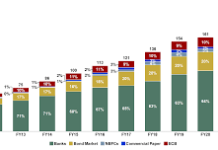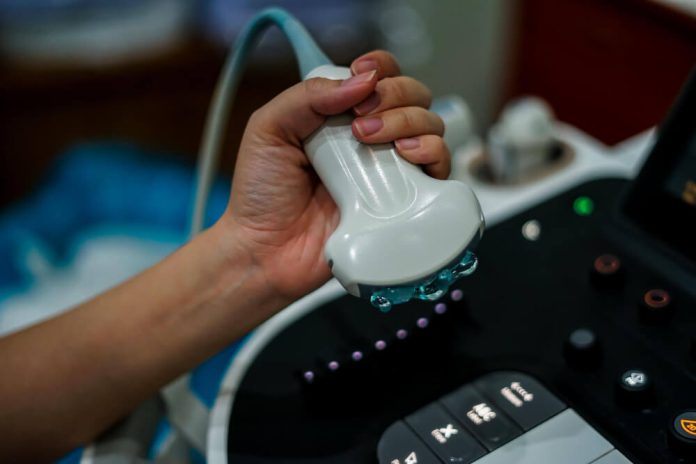A groundbreaking study by a team of researchers from Concordia University suggests a promising new method for boosting the body’s immune response against cancer tumors. The research, published in Frontiers in Immunology, explores the use of ultrasound-guided microbubbles, a technology already widely used in medical imaging and drug delivery.
The study focuses on enhancing the effectiveness of cancer-fighting T cells, offering new potential in cancer treatment strategies.
The researchers’ findings point to a novel technique that leverages ultrasound to modify the behavior of immune cells, specifically T cells, by increasing their permeability. This process boosts the release of cytokines, which are vital for the immune system’s ability to fight cancer.
How Ultrasound-Guided Microbubbles Work to Activate T Cells
At the core of this study is the combination of ultrasound technology and microbubbles, which are small, clinically approved contrast agents used in imaging. In this new application, ultrasound waves are directed at immune cells, causing the microbubbles to vibrate at extremely high frequencies.
This vibration exerts pressure on the T cell membranes, temporarily increasing their permeability. As a result, T cells react as if they are encountering an antigen, which triggers them to secrete cytokines and other signaling molecules crucial for the immune response.
The ultrasound treatment does not harm the T cells themselves, and the approach is non-invasive, which adds to its appeal as a potential therapeutic method in cancer treatment.
Reactivating Deactivated T Cells Inside Tumors
One of the primary challenges in cancer therapy is overcoming the tumor’s ability to suppress immune cells once they infiltrate the tumor environment. Tumors have a hostile microenvironment that can deactivate T cells, preventing them from producing cytokines that are crucial for activating further immune responses.
This new technique aims to reverse this effect by using ultrasound-guided microbubbles to reactivate these T cells, allowing them to release the cytokines necessary for immune system activity.
Ana Baez, the lead author of the paper and a PhD candidate, explains that by reactivating T cells inside the tumor, the process not only helps the cells secrete important immune proteins but also stimulates a positive feedback loop. This loop accelerates the growth of more immune cells and blood vessels, amplifying the body’s natural defenses against cancer.
The Impact of Ultrasound on Cytokine Release
The study shows that the release of cytokines by T cells increased significantly when ultrasound waves were used. In fact, the researchers observed that cytokine levels rose between 0.1 and 3.6 times higher than untreated cells over a 48-hour period. However, it was also noted that the longer the ultrasound exposure, the less cytokine was released, as the membranes of the T cells became more permeable.
While these findings are preliminary and based on benchtop experiments, they hold great promise for improving existing cancer treatments. The researchers believe this technique can complement current therapies and potentially lead to more effective treatment options in the future.
A Non-Invasive, Repeatable Method for Cancer Treatment
The method explored in this study is non-invasive, which means it can be repeated as needed without the risks associated with more invasive treatments. Additionally, ultrasound-guided microbubbles are already used clinically in medical imaging, making it easier to integrate the technology into existing healthcare systems.
Brandon Helfield, an associate professor of biology and physics at Concordia University and the supervising author of the study, envisions a future where ultrasound-guided microbubbles could be adapted from imaging to therapeutic use.
“In the future, we could manipulate the ultrasound beam from imaging to a therapeutic sequence,” Helfield says. This would allow doctors to target and activate T cells only in specific areas where treatment is needed, reducing potential side effects.
Moreover, combining this ultrasound treatment with cancer-fighting drugs may further enhance its effectiveness. This approach could deliver more targeted and personalized treatment for cancer patients, a significant step forward in cancer immunotherapy.
Further Research and Clinical Applications
Though the research is still in its early stages, the potential applications for this technology are vast. The team at Concordia University hopes that their work will pave the way for deeper insights into the various immune pathways that combat cancer.
Additionally, they aim to improve the existing methods of cancer treatment and cellular therapies by adding a non-invasive, localized option to the treatment arsenal.
As this research moves forward, it could open new doors for innovative cancer treatments that harness the body’s natural defenses, potentially transforming the landscape of cancer immunotherapy.
I hope you find the above content helpful. For more such informative content, please visit Medtechreporter.











